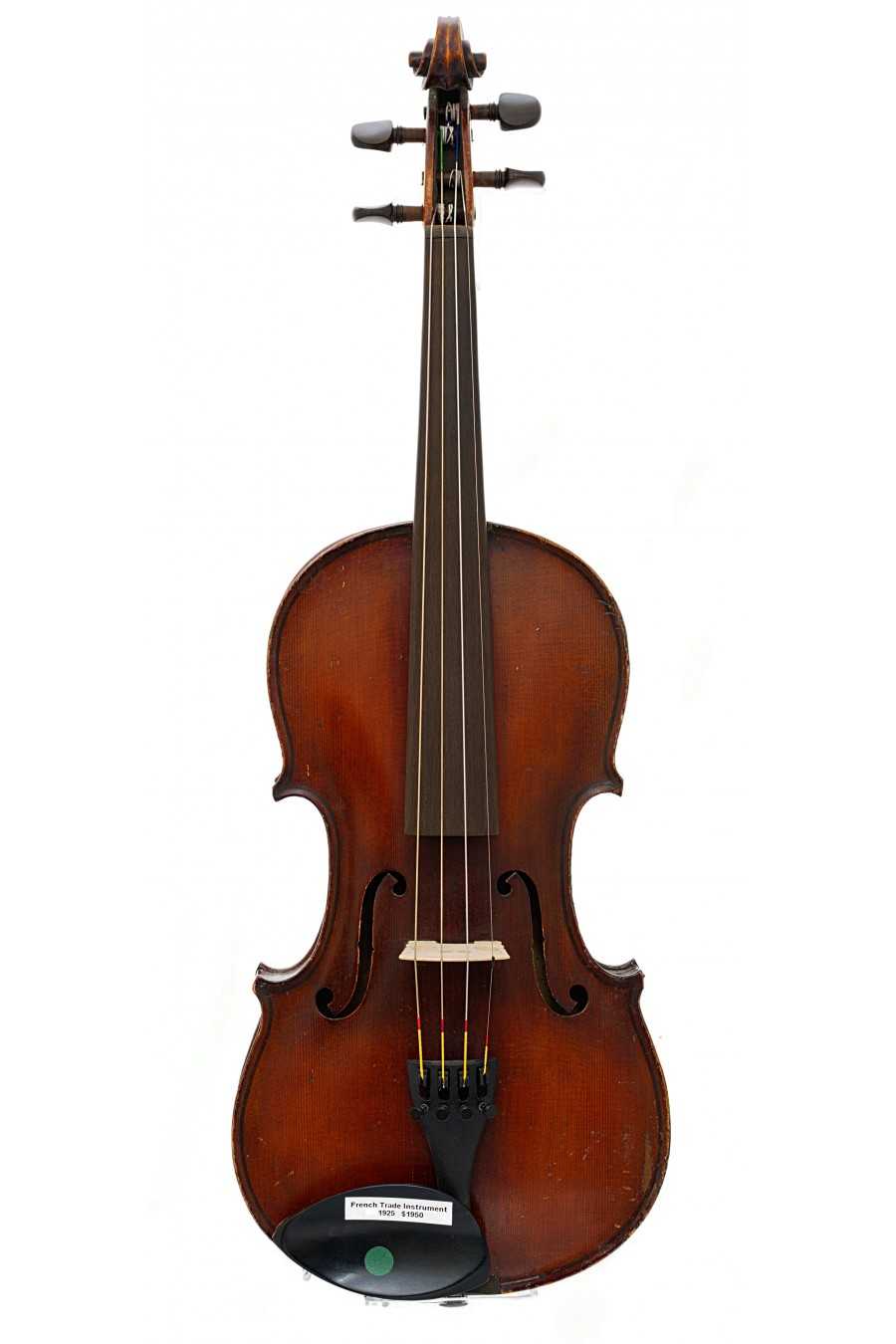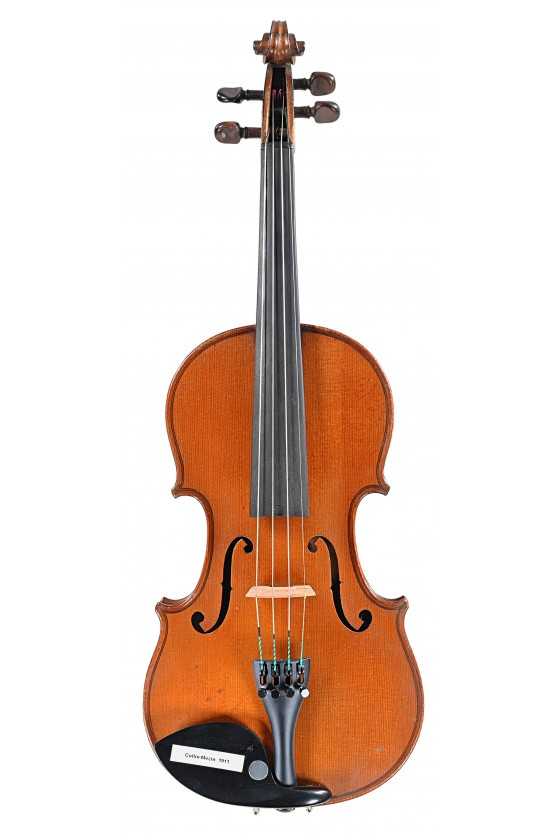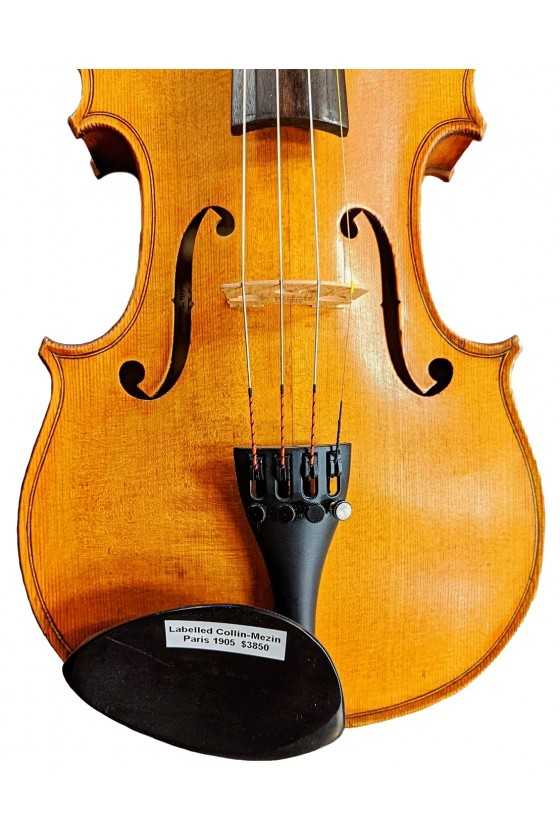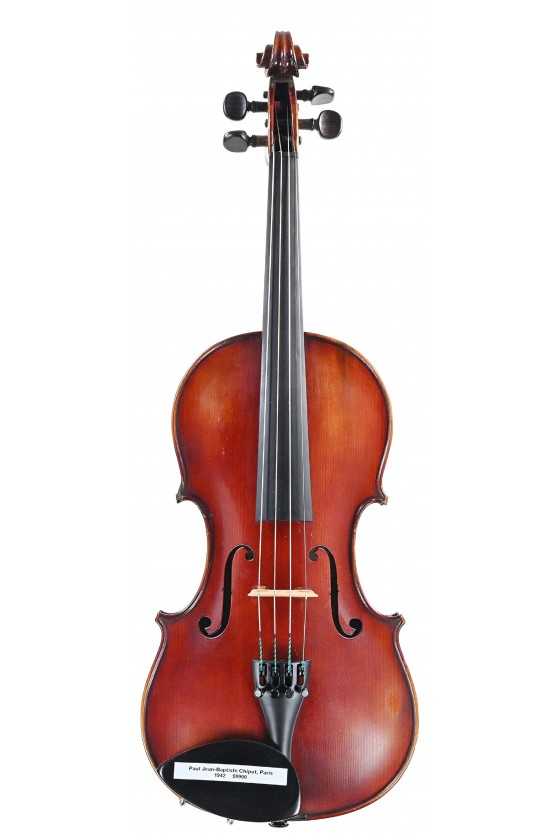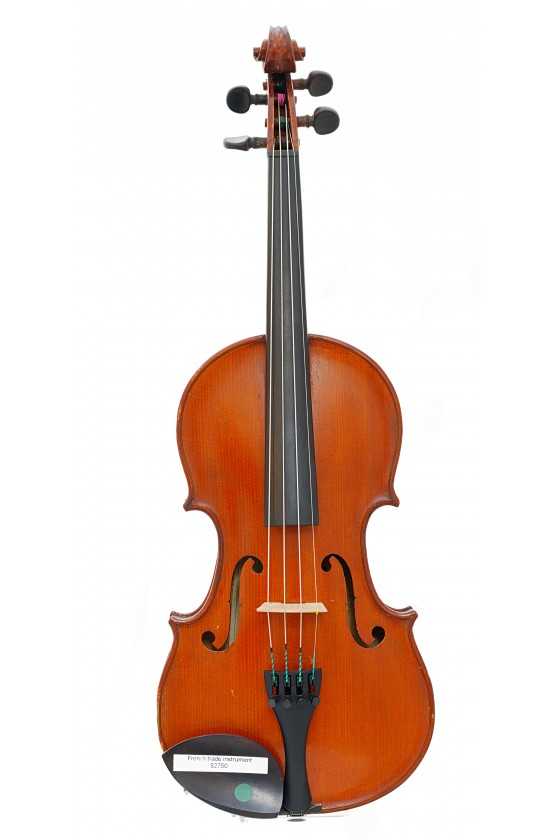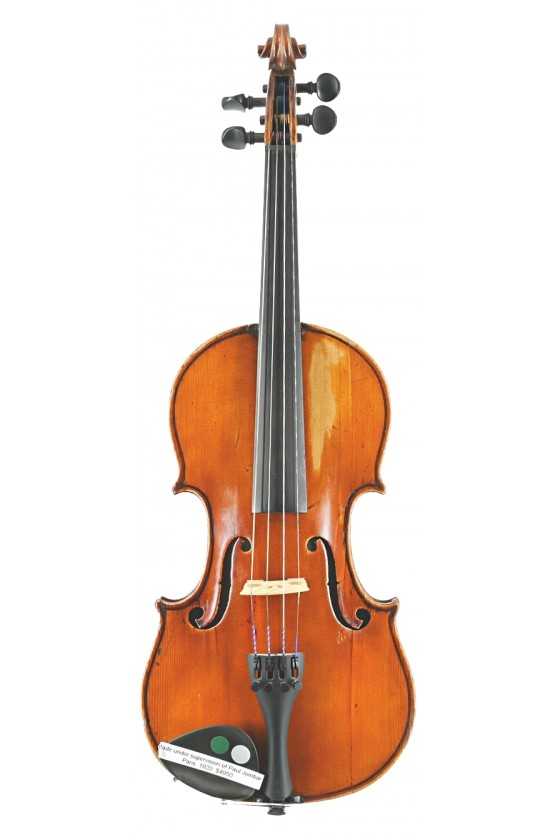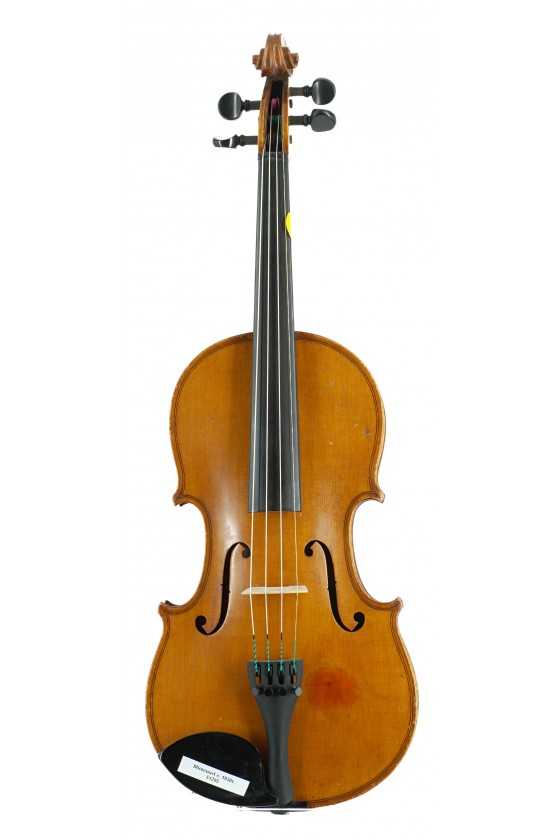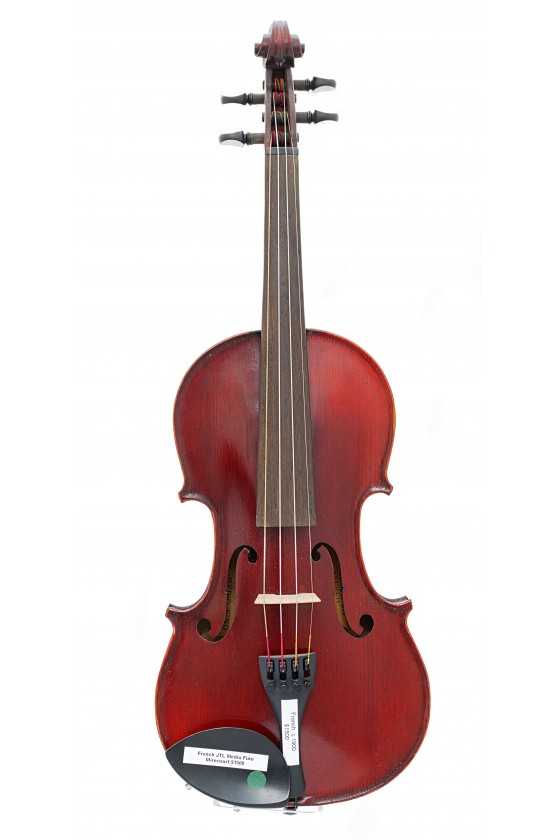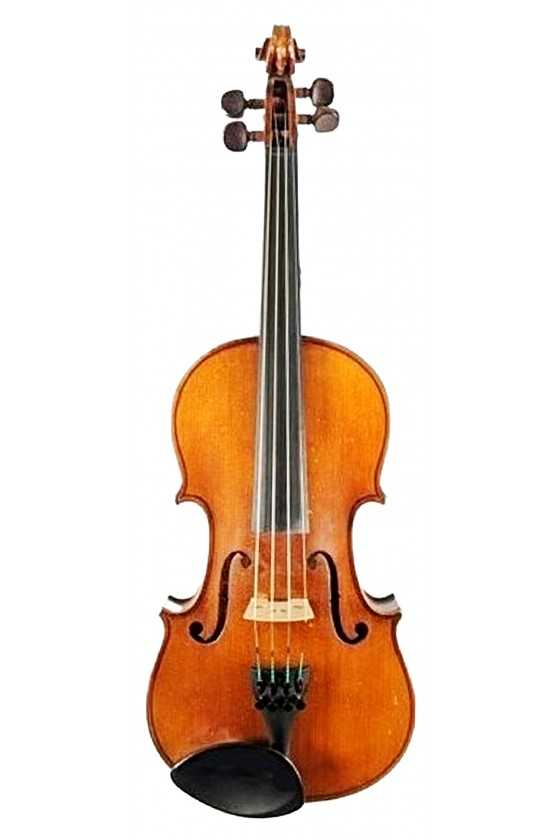A French Trade Violin Instrument made around 1925
Based on its label, this French trade violin is from Jean-Baptiste Vuillaume (7 October 1798 – 19 March 1875) a French luthier, born in Mirecourt, France. His father and grandfather were both luthiers which explains his interest in violins and other stringed instruments. He later joined various workshops when he moved to Paris in 1818. One in particular is the workshop of Simon Lete, the son-in-law of François-Louis Pique at Rue Pavée St. Sauveur. Their partnership led them to settle in Rue Croix-des-Petits-Champs in 1825 under the name of "Lété et Vuillaume."However, his first labels are dated 1823.
He became a great inventor and winner of various awards such as a silver medal at the Paris Universal Exhibition in 1827. He started his own business at 46 Rue Croix des Petits-Champs became the most important workshop in Paris, creating over 3000 instruments.

